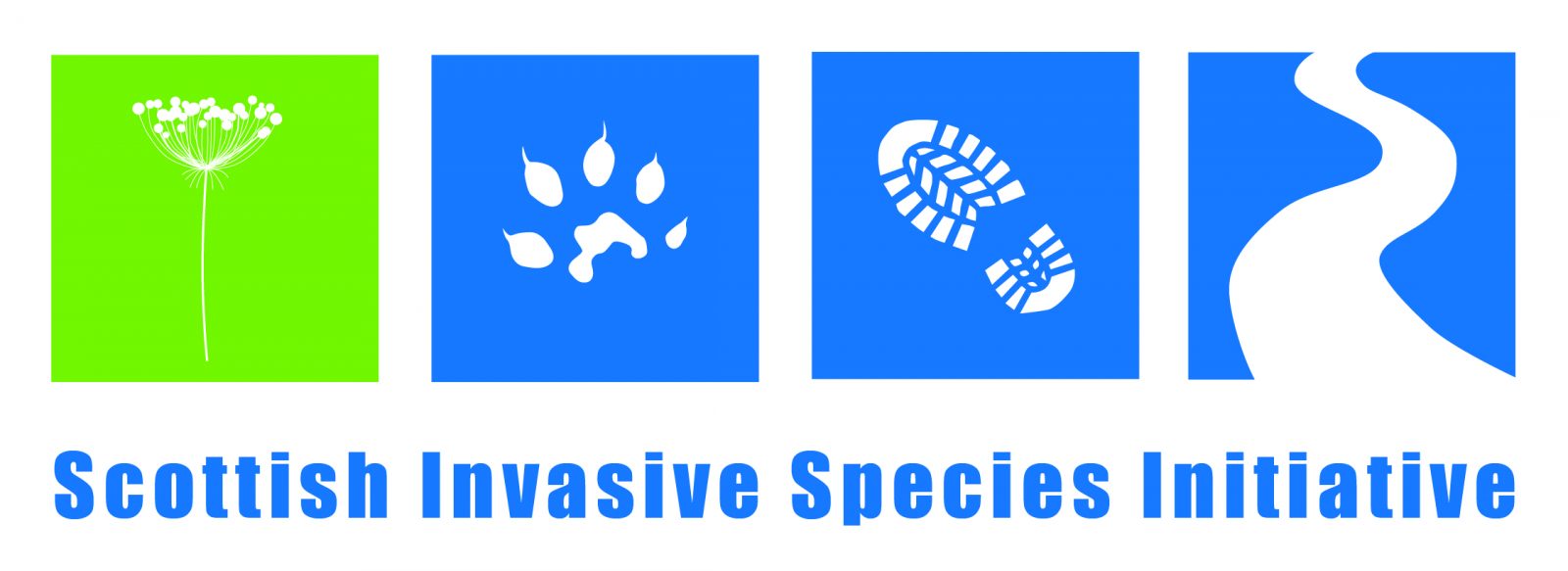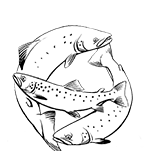What is Biosecurity?
Biosecurity is a set of control, preventive and eradication measures designed to reduce the risk and environmental damage of invasive non native species (INNS), infectious diseases, and other living modified organisms.
The Scottish Invasive Species Initiative 
The Scottish Invasive Species Initiative (SISI) is a 8-year partnership project which aims to work with local organisations and volunteers to control invasive non-native species along riversides in Northern Scotland, for the benefit of our native wildlife and communities.
The project is led by NatureScot and is funded by the National Lottery Heritage Fund, NatureScot, the Scottish Government’s Nature Restoration Fund (managed by NatureScot) and by in-kind support from project partners and volunteers.
Our iconic Scottish freshwater rivers and lochs are at the heart of our environment and they play a key role in supporting much of Scotland’s wildlife, support a range of economic activities and have a high social and recreational value. Invasive non-native species (INNS) are having a significant negative impact on our freshwater and riparian (riverside) environments, being responsible for the decline of native species and causing effects like bank erosion. We want to halt and control the spread of invasive species, undertake habitat restoration and encourage the return of our native wildlife.
Our project staff will work with the ten Fisheries Trusts/Boards who look after the rivers from the Tay in the south to the remote catchments of North West Sutherland, to recruit and train volunteers and work with local groups to enable control of invasive species at a local level, embedded in the community. View the area we are working on the project area map. We are funded for 8 years, until March 2026, after which time our aspiration is that local community control of invasives will continue, making this a sustainable long-term solution to invasive species control.
Everyone can help halt the spread of invasive non-native species, whether by getting directly involved in control work, practising better biosecurity to limit their spread or by simply being more aware of invasive species and reporting sightings. We want to raise awareness of the problems invasives cause and engage the public in being part of the solutions.
This is an ambitious project, aiming to create a sense of cohesion between partners, volunteers and communities and working at a large-scale across a third of Scotland to ensure co-ordinated INNS control.
The target and priority invasive species
The key target species for the SISI project are Giant hogweed, Japanese knotweed, Himalayan balsam, American skunk cabbage, White butterbur and the American mink.
SISI works in partnership with the fishery trusts, to support, train and equip volunteers with the skills and equipment they need to enable control of invasive species at a local level, embedded in the community.
SISI work is covering five main areas of activity, which we are helping to deliver.
With the help of volunteers, we are pulling out Himalayan balsam and treating Giant hogweed and Japanese knotweed with herbicide. We need more volunteers to help, so please get in touch if you are interested!
We are building on previous control work by reinvigorating the programme of monitoring and trapping for removal of mink, with the help of a network of volunteers. We are looking for more volunteers to adopt mink rafts in our area, could this be you?
No experience necessary! We are investing time and support in building a network of enthusiastic volunteers, providing them with skills, training and qualifications (at no cost) such as pesticide application (PA1/PA6) and first aid.
Through delivering education programmes for schools and community groups we can engage people in discovering the importance of the river environment and the impacts of invasive species.
A key part of controlling invasive species (and diseases) is preventing their spread into new areas, so we are all working to promote good biosecurity measures.
What are Invasive Non Native Species?
Invasive non native species (INNS) are any non-native animal or plant that has the ability to spread causing damage to the environment, the economy, our health and the way we live.
Non-native species have long been introduced and used as ornamental plants or pets and only a small minority of them are or will become invasive (SNH, 2000). However, the threat from invasive species is growing at an increasing rate assisted by climate change, pollution and habitat disturbance. They are now recognised as the greatest threat to biodiversity next to habitat destruction and they threaten our native plants, animals and habitats.Globally, INNS have contributed to 40% of the animal extinctions that have occurred in the last 400 years (CBD, 2006). Many countries including Scotland are now facing complex and costly problems associated with invasive species.
The SISI team and getting involved
The SISI project is led by Scottish Natural Heritage (SNH) and is funded by the Heritage Lottery Fund, SNH and by in-kind support from the project partners and volunteers – the total value of the project is some £3.24 million. The project is delivered by both a team of SISI staff employed by the project and by our own fishery trust staff.
At the Deveron, Bogie & Isla Rivers Charitable Trust the invasive species management work is being led by Mirella Toth and Rachel Turner.
If you are interested in volunteering with any aspect of the SISI project, have a look at the volunteering pages on the SISI website or get in touch directly with Lewis or Robert on lewisbarr@deveron.org / robertpaylor@deveron.org or through our office on 01466 711 388.
Find out more and keep in touch with SISI
You can find out more about the Scottish Invasive Species Initiative (SISI), the target species, how to get involved and volunteer or keep in touch with progress on the project website and through social media via the links below:
Website: www.invasivespecies.scot
Facebook: Scottish Invasive Species Initiative
Twitter: @SISI_project
Instagram: scot_invasive_sps_initiative
*The ten fishery trusts/boards involved in the SISI project are; Tay District Salmon Fishery Board, Esk Rivers & Fisheries Trust, River Dee Trust, Deveron Bogie & Isla Rivers Charitable Trust, Spey Fishery Board, Findhorn Nairn & Lossie Fisheries Trust, Ness & Beauly Fisheries Trust, Cromarty Fisheries Trust, Wester Ross Fisheries Trust and West Sutherland Fisheries Trust. In addition to these, The University of Aberdeen is an academic partner in the project.
INNS FACT FILE:
- INNS have contributed to 40% of the animal extinctions that have occurred in the last 400 years (CBD, 2006).
- INNS and fish diseases damage our environment, the economy, our health and the way we live.
- They already cost the Scottish economy, and therefore us, upwards of £500 million per year and the UK economy £2-£6 billion per year.
- A Scottish Government report estimated the potential Net Economic Value loss to Scotland of the introduction of the salmon parasite Gyrodactylus salaris at £633 million with severe consequences for rural communities.
- In the UK, Japanese Knotweed is thought to affect an area roughly the size of London and Defra has estimated the total cost of its removal using current techniques at £1.56bn.
- £25 million is the estimated cost of clearing the invasive Rhododendron ponticum from the Loch Lomond and Trossachs National Park.
- If nothing is done the costs to our environment, economy and health will only increase.
Read more about the hidden costs of invasive species in this Geographical article.








